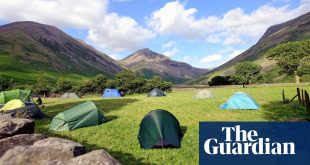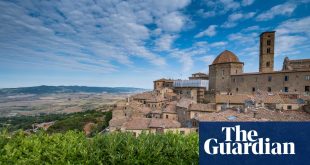Pottery in Slovenia
My arms ached from hours of pinching, squeezing and rolling, my legs were stiff after the previous afternoon’s mountain hike, but I felt great: clear-headed and well slept. And the reason? Art – a subject I’d been a failure at at school, and avoided for decades.
If a change is as good as a rest, could a major switch – away from London life, and anything I felt competent at – be majorly refreshing?
This is the idea behind Vacation With An Artist (Vawaa), started in 2017 by New Yorker Geetika Agrawal to offer short breaks with talented professionals in 26 countries. Rather than taking a conventional painting holiday, travellers get to work closely alongside, say, a California printmaker or a Norwegian photographer.
Before heading to Slovenia, my friend Kalpana and I imagined our host, a ceramicist living near Ljubljana, larger than life and bossy, so were relieved to find Katja Špiler gentle, kind and encouraging.
“Creativity is a precious thing,” she said on our first morning. “Just don’t think about it too hard.” She might as well have told me not to breathe.
Katja, 41, trained as sculptor and loves using the earthiness of clay to build sculptures in ceramic.
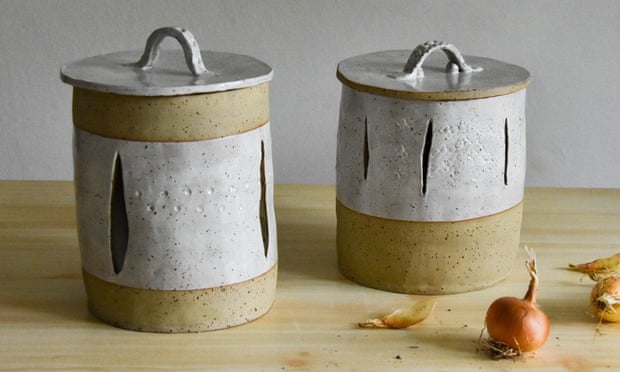
We started with the oldest technique: pinching. You only need hands for this, but strong ones: it takes effort to press a ball of fresh clay into a cup or bowl shape. It was also a lesson in slowing down, patiently coaxing the clay. “More time, better result,” said Katja.
Another method was familiar from making Christmas mince pies: rolling out clay – between wooden slats for even thickness – before pressing it over a mould. It made a more regular bowl and, led by Katja, I added a pleasing pattern to mine with a textured cloth.
Just as pleasing was the unreal prettiness of Slovenia. Krize is a short drive from lakes Bled and Bohinj, but we found plenty to enjoy much closer after our hours in the studio. It was 10 minutes’ drive to the high rock walls of Dovžan Gorge, with its circular walking route and scary via ferrata. Another afternoon we toiled for an hour up neighbouring Kriška Gora, before accepting that we wouldn’t make its 1,473-metre summit.
By day two we already felt at home in the studio, tweaking and trimming pieces that had dried “leather-hard” overnight, then painting them with “engobe” pigments. Katja gave our creativity free rein, but was ready with practical help – such as a piece of foam rubber to steady your hand. I painted one bowl indigo green outside and acid yellow inside with green dots. Katja kindly said it looked “joyful”. Hmm.
The plan was to complete one major work during our stay. We both opted to make a tall pot to store onions and garlic. This was the steepest learning curve and the most absorbing work: slowly building with 3cm strips of rolled clay. Hours flew by as we joined sections with “slip” (runny clay), smoothing, squeezing, trying to keep walls upright. Using my fingertips to “see” air bubbles or bulges was a new sensation for one whose most frequent connection is with a keyboard.
This is why Vawaa beats, say, evening classes. Work, home and to-do lists melted away; the only decision looming was what pattern to pick for the sides of my pot. Try achieving that between seven and nine on a Tuesday.
Our bowls were fired on the last night. Only one didn’t make it: a pretty cantaloupe-coloured pinch bowl made by Kalpana shattered in the 1,000C heat because of a hidden air bubble. “It happens: that’s ceramics,” said Katja. “After 20 years I’m still learning.”
The big pots were fired after we left. They came out of the kiln intact and, once mine arrives in the post, I think I’ll feel OK about having it on display in my London kitchen. It takes a lifetime to become an expert ceramicist, but I left amazed at what we’d achieved in three-and-a-half days.
A four-night stay with Vawaa costs about £950 for one or £1,285 for two, including materials, firing, accommodation and some meals. Car hire was provided by Regent Holidays, which offers self-drive tours of Slovenia from £885pp
Liz Boulter
Map reading in Snowdonia

“Remember, when the contour lines are parallel, it’s a steady slope,” says Ross Worthington of Raw Adventures. “When they wriggle, it’s a feature. So what will we see next?”
I’m out in the wilds of Snowdonia trying to make the scenery match up with the wiggles on the Ordnance Survey map, as part of a two-day mountain skills course.
I peer at the map. Maroon contour lines bend into a “V” pointing towards where I know we’re heading. Next to it is another “V” pointing away from us.
“The numbers inside that V get smaller,” I say, pointing at the V coming towards us, remembering what I’d been taught the day before. “That means it’s a gully. The other V has bigger numbers in the middle so it’s a ridge. We want to take the gully downhill.”
We pick our way down the gully, alongside a stream to the floor of the Ogwen Valley. When we reach the bottom, I look up at the ridge, which ends in steep, rocky cliffs.
“Well done,” says Ross. “If we’d taken the ridge, we’d have had to turn back.”
While more of us than ever are striding across valleys and hiking up peaks, Britain’s mountains can be hazardous. Mountain Rescue England and Wales responds to about 3,000 call-outs every year, to people getting lost or injured, and a recent poll found that 77% of us could not identify even basic map symbols.
Part of the problem is that people follow a route on their phones, but get into problems when they hit difficult terrain, when their phone runs out of battery life, or when bad weather sets in, explains Ross.
“A bit of education keeps you out of trouble in the first place, and keeps you safe if things don’t go to plan.”
Our group of four had started at a hostel in Llanberis, checking our kit for spare warm and wet-weather clothing.
“Hypothermia happens fast,” says Ross, “and can strike even in good weather, particularly if you get injured.”
We go through weather forecasting (using barometric maps on the Met Office website), map reading, grid references and the use of a compass. As soon as we step out the door, we put it into practice.
It’s quite intense but doesn’t take too long before I can look at a map and the lines and symbols come to life, and match the terrain we’re walking through. Ross takes us through the emergency procedures and campsite selection, and we set up our tents on a patch of dry ground, sheltered from the prevailing wind. As darkness falls, we do some night navigation, following a compass bearing to nearby features, forcing me to trust my skills, and not just my eyes.
I’m exhausted by the time we reach Llanberis again, with contour lines swimming before my closed eyes. I’ve since spent more time in the mountains, with more confidence than ever before – and I haven’t needed to bother Mountain Rescue once.
The two-day UK Mountain Skills course with Raw Adventures costs £140 per person
Ash Bhardwaj
Chairmaking in Sussex
I’m standing in a wood with an axe in my hands. Holding a length of ash upright on a rudimentary wooden table, I hack away. It soon looks like it has been attacked by an angry beaver. I find it hard to believe that I’ll end up with a chair by the end of the week.
But that’s the plan: I have five days to make a Windsor-style chair. My tutor is Danny Harling, a furniture maker who runs green woodworking courses from his ancient woodland a few miles east of Lewes.
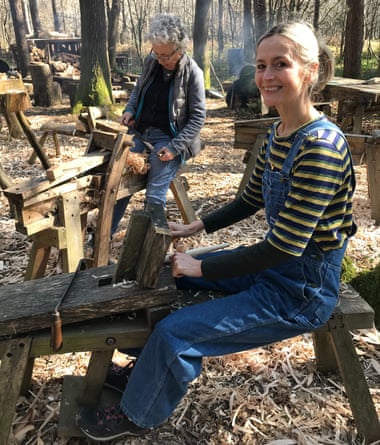
There are six of us in the group. Most leave the woodland each evening, but I’ve opted to stay in the on-site log cabin, which is furnished with a bed and a wood burner, but has no running water or electricity – and no lock. I sleep fitfully, aware of a creature scratching outside.
I spend most of day two sitting on a shaving horse making 10 spindles. The muscles in my hands, arms and shoulders protest but my brain ignores them. Without any conscious effort my mind has switched off. I sleep for 10 hours straight on the second night.
On the morning of day three, Danny hands out heavy chunks of wood which will become seats. It’s time to use the adze. Trying to swing this unwieldy, long-handled tool accurately enough to shave off a sliver of wood takes a level of skill I don’t have. But Danny is always on hand to help, reassuring us whenever we get stuck. “I’ll worry,” he says. “You don’t need to.”
At lunchtime, Danny’s mum arrives with homemade soup, bread and fruit cake. The blackened teapot is put on the fire and we eat under the trees.
Green wood contains moisture, so the spindles and stretchers are dried in an old oil drum. To make the bow backs, long pieces of wood are steamed to soften them, then quickly bent into shape. The only time we use an electric tool is to drill holes in the seat for the spindles before assembling all the components.
My finished chair is a thing of beauty. Sure, it has flaws – but they are evidence of a learning process that was about more than producing a physical object. It was an exercise in the meditative power of nature – and trying something new.
The five-day chairmaking course with Sussex Green Woodworking costs £475 excluding cabin accommodation; the next available course is in June 2023
Isabel Choat
Humorous writing in Greece

In the warmth of a beautiful Greek evening, I am standing on a makeshift stage happily telling my fellow travellers all about my proclivity for sharing embarrassing stories about my knickers – beginning with the one about the spa and the lacy thong.
I had signed up to a week-long humorous writing course with comedian Tony Hawks (a regular on I’m Sorry I Haven’t a Clue and author of books including Round Ireland with a Fridge) on the island of Skyros in the wintery depths of the second lockdown, when my greatest need was for laughter and joy.
Months later, I join the trip with some trepidation. Skyros Holidays are described as “holistic retreats” and “community-based”, not the sort of holiday I’m usually tempted by: all-inclusive food, eco huts with shared facilities and organised evening activities.
Alongside the writing sessions, there’s a selection of creative and wellbeing activities to dip into. I rise before breakfast for yoga and go kayaking and wild swimming in the afternoon. As the sun sets, I practise Qigong on the seashore.
Mornings are spent in stitches courtesy of Tony. He talks about the art of humour, regaling us with hilarious, well-crafted anecdotes to illustrate devices such as ranting and self-depreciation, which professional comedians use to get an audience on side. Then, he sends us off to write.
Siesta time is thus spent under a pine tree, overlooking a sublime Aegean bay, amusing myself with pen and paper.
One morning we play a version of the Radio 4’s The Unbelievable Truth – whoever knew that telling convincing lies was such an art. Other days I’m challenged to sneak as many song titles as possible into a diatribe about Abba or work out whether the dissolving ski pants story flows best after the thong/spa exposé or the semi-naked beef-weighing one. The results, though hardly high art, make the class laugh (and groan).
The greatest revelation is that I enjoy performing, even though public speaking usually scares me. I find making people laugh brings me the joy I was seeking and I revel in the audience interaction. Which is how I came to be oversharing on that moonlit stage, safe in the knowledge that I’m among friends, my body and soul uplifted by the holiday. I’m returning to Skyros this September to try my hand at standup – and that I find truly astonishing.
Skyros activity holidays start at £795 including full-board, courses and activities
Deborah Gray
Ballroom dancing in Vienna
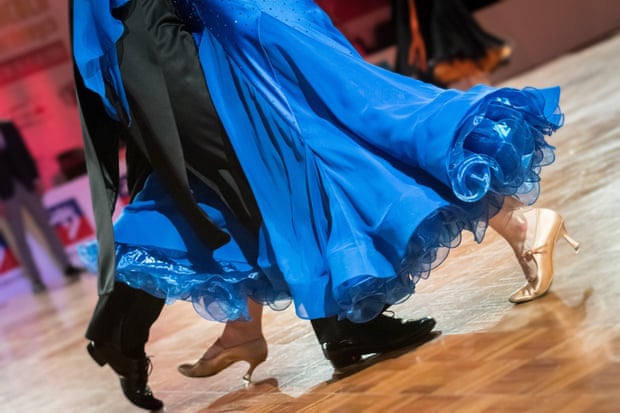
It’s a seductive proposition. A few nights in Vienna, taming loose limbs and freeing rigid hips, guided by the strong arms and twinkle-toes of a ballroom icon. Dubbed the “Len Goodman of Austria”, Thomas Schäfer-Elmayer is a super-star in Vienna’s dance scene and, like Goodman, an elegant silver fox in his 70s. He is also a judge on Austria’s version of Strictly Come Dancing and owner of Elmayer Dance School, established in 1919 by his grandfather.
As a Strictly fan, I watched in awe as pro dancer Aljaž Škorjanec whisked BBC news reader Kate Silverton around Blackpool’s dazzling chandelier-decked dancefloor. Could I ever float as effortlessly in a swirl of layered chiffon to a Viennese waltz? A call to the dance school and I’m assured I can. Book a single lesson, or a course. I opt for three sessions over three days with the option to add umpteen more – it’s flexible. I’m nervous as I wait outside the famous green doors of the dance school, carrying a pair of glittery dance shoes in sweaty hands.
Vienna still hosts 450 sellout formal balls every year at which guests are expected to dance to a high standard, not do an aimless shuffle, and Schäfer-Elmayer teaches thousands each year. He greets me formally, dipping his head and taking my clammy hand.
The first session is all about confidence, which I am seriously lacking. I’m given some basic pointers re footwork – forward and backward steps.
“Feel the waltz,” Schäfer-Elmayer urges as he guides me around the floor at a frighteningly rapid rate. The pace quickens – four, maybe five-fold – for this is no plodding English waltz but a spirited 180 beats a minute whirl. We canter off, in improved synchronicity, with Schäfer-Elmayer pulling my wayward limbs tightly back into hold – a “sinful” grip that once caused the outlawing of the Viennese waltz as it was deemed too vulgar and too risque.
As I whirl and spin, dopamine, oxytocin and serotonin course through my veins and all dizziness is forgotten. Each day, my steps and flow steadily improve.
On my last day, as I reposition my head on a turn, I catch a glimpse of myself in the studio mirrors. Wow – is that really me? A dancer with fuchsia-pink cheeks, beautiful posture and finesse, and a beaming smile like an over-stretched hammock is looking back at me.
Lessons at Elmayer dance school from €75 for one person or a couple. Sessions daily between 8am and 10pm (must be pre-booked)
Sarah Woods
Bushcraft in Cornwall
“Pull the skin down like you’re pulling off a pair of pyjamas,” my butchery guide, outdoorsman and TV presenter Thom Hunt tells me as I delicately try to get the pelt off a freshly shot deer.
Skinning and butchering a deer is harder work than I’d imagined but
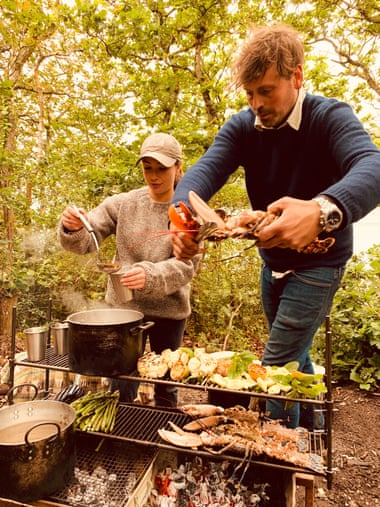
I determinedly keep going with a sharp knife, making punchy incisions and eventually, voilà, the skin comes right off so I can see the lipstick-hued flesh underneath.
I’m in the wilds of Cornwall outside Truro at Hunt’s bushcraft school 7th Rise, with a group of eight girlfriends. There’s a range of workshops and courses on offer here, covering everything from mackerel fishing to wood whittling, but we’ve signed up to the three-day Rewild adventure. Our accommodation is in a woodman’s cottage, a treehouse and converted potting shed.
While the butchery session is too much for our vegetarian friend, who heads off for a walk, we’re learning plenty of other skills, from firelighting to foraging.
It’s satisfying to discover the wild food all around. We learn to identify wild garlic, samphire and cress to add to our evening feast, eaten using cutlery whittled out of foraged wood earlier that day. Woodsmoke scents my hair following our firelighting course, the art of rubbing a flint and steel together surprisingly easy, although the damp twigs require ardent blowing to keep the flames alive.
Hunt describes these courses as the “ultimate bonding experience, because everyone gets to enjoy the satisfaction of completing a task together”. The lack of phone signal means we aren’t distracted, too.
Whether I’ll use these skills again I don’t know, but my whittled spoon sits proudly in my cutlery drawer back home.
Weekend adventure courses at 7th Rise from £345; day courses throughout the year from £40 (£25 kids)
Sadie Whitelocks
 Top Naija News – Nigeria News, Nigerian News & Top Stories Top Naija News – Nigerian Newspapers, Nigerian News. topnaijanews is a daily Nigerian newspaper covering Latest News, Breaking News, Entertainment, Sports, Lifestyle and Politics.
Top Naija News – Nigeria News, Nigerian News & Top Stories Top Naija News – Nigerian Newspapers, Nigerian News. topnaijanews is a daily Nigerian newspaper covering Latest News, Breaking News, Entertainment, Sports, Lifestyle and Politics.

